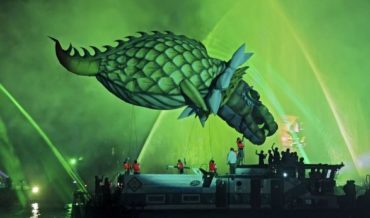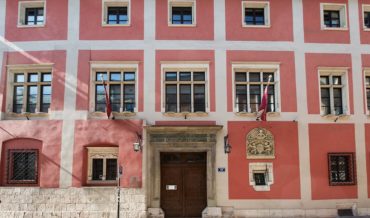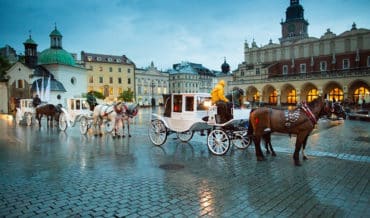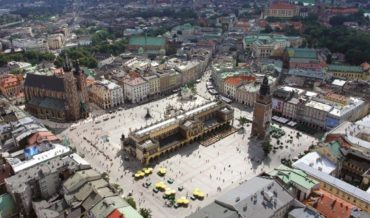Contents
Early Life and Education in Florence
Gucci Santi, the distinguished Italian architect and sculptor, was born around 1500 in Florence and died in 1576 in Mirów near Pińczów. He was also known by the name Florentino, while his surname appeared in historical documents with various spellings, including Guci and Guczy, a common practice in an era when orthographic standards were not yet established.
Santi received his foundational artistic education in Florence, studying in his father’s workshop called Gucci della Camilla. This family workshop was part of the rich Florentine artistic tradition that had flourished since the Renaissance. The training he received there encompassed both architectural design and sculptural techniques, providing him with the comprehensive skills that would later make him invaluable to the Polish royal court.
According to Professor Adam Miłobędzki, author of the fundamental work “Polish Architecture of the 17th Century,” this type of comprehensive artistic education was characteristic of Italian masters who later played a crucial role in spreading the Renaissance throughout Central Europe.
Journey to Poland and Royal Service
Arrival and Early Career
After 1550, Santi made the significant decision to travel to Poland, joining the wave of Italian artists and craftsmen who were drawn to the Polish court during the Renaissance period. This migration was part of a broader cultural exchange that brought Italian artistic expertise to Central Europe.
From 1558 onwards, he appeared in official records as a bricklayer and architect, serving successive Polish monarchs. His presence in Krakow is confirmed by municipal documents and royal accounts from 1558-1579, where he appears as “Murator Regius” (Royal Mason) or “Architect.” Santi’s career spanned the reigns of three important rulers:
- King Sigismund II Augustus – his first royal patron
- Anna Jagiellon – under whose reign he continued his architectural work
- Stefan Batory – for whom he created some of his most significant works
Professional Base and Residences
Santi established his primary headquarters in Pińczów, a town that became an important center for his operations. However, he also maintained residence in Krakow, the former capital of Poland, which allowed him to remain close to the royal court and major architectural projects. This strategic dual residence arrangement enabled him to oversee projects across different regions while maintaining connections with both local and royal patrons.
Major Architectural Works and Achievements
Royal Commissions in Krakow
Santi’s most prestigious work was concentrated in and around Krakow, where he contributed to several landmark buildings:
Cloth Hall
He designed an intricate mascaron for the Cloth Hall, one of Krakow’s most important commercial and architectural landmarks. This decorative element showcased his sculptural expertise and contributed to the Renaissance transformation of the medieval structure. Santi introduced here the characteristic Italian Renaissance grotesque motifs with plant elements, which represented a novelty compared to local, more Gothic forms.
Wawel Cathedral Projects
One of his most significant religious commissions involved the reconstruction of St. Mary’s Chapel in the Wawel Cathedral into the mausoleum of Stefan Batory. As Professor Jan Białostocki writes in “Renaissance Art in Poland,” this project required both architectural sensitivity and sculptural skill, as it involved transforming a sacred space into a royal burial site while maintaining its religious character.
The work on this mausoleum was extraordinarily complex, requiring not only artistic vision but also expertise in organizing large-scale construction work, often with limited resources and within a historic environment. Santi employed red marble and alabaster specially imported from Italy, demonstrating the pursuit of the highest quality and luxury typical of Renaissance patronage.
Niepołomice Castle
Santi crafted the door frame for the rooms on the second floor of Niepołomice Castle, demonstrating his attention to detail in interior architectural elements. This work reflected the Renaissance emphasis on decorative architectural details that enhanced the palatial character of royal residences.
Secular Architectural Projects
Stefan Batory’s Palace in Łobzów
He designed and constructed Stefan Batory’s palace in Łobzów, a suburban residence that served as a retreat for the Polish king. This project allowed Santi to showcase his skills in complete architectural design rather than just decorative elements.
Main Market Square Tenement
Historians attribute to him the coats of arms and mascarons of the magnificent attic on Bonerowska’s tenement house on the Main Market Square no. 9. This attribution is based on stylistic analysis—the characteristic use of pilasters, moldings with developed profiles, and ornamental friezes with grotesque motifs is consistent with Santi’s style known from other works. This work exemplified the Renaissance practice of adorning merchant houses with elaborate decorative elements that rivaled those of noble residences.
Sculptural and Funerary Works
Royal Tombstones
Santi created royal tombstones, combining his architectural knowledge with sculptural expertise to produce monuments that were both artistically significant and politically important. These works served to commemorate the Polish monarchy and establish lasting memorials to royal power.
His technique involved employing multi-layered architectural composition in which figural elements were integrated with architectural ornament, characteristic of the 16th-century Florentine sculptural school.
Myszkowski Family Chapel
His workshop was associated with the chapel of the Myszkowski family at the Dominican Order in Kraków. This connection illustrates how Santi’s influence extended beyond direct commissions to encompass a broader network of artistic collaboration and workshop practices.
Personal Estate and Legacy
Mirów Palace
In addition to his commissioned works, Santi built a palace in Mirów for his own use, demonstrating both his personal success and his commitment to the region where he had established his career. This palace served as both a residence and a symbol of his integration into Polish noble society.
Artistic Style and Influence
Santi’s work represented a crucial bridge between Italian Renaissance artistic principles and Polish architectural traditions. His mascarons, decorative elements, and architectural designs introduced sophisticated Italian techniques while adapting to local materials, climate, and cultural preferences.
Although many Italian artists worked in Poland at the time, Santi distinguished himself through extraordinary versatility from monumental tombs, through architectural details, to comprehensive palatial projects, making him one of the most influential Renaissance architects in the Polish-Lithuanian Commonwealth, alongside figures such as Bartolomeo Berrecci and Giovanni Battista di Quadro.
His style evolved in Poland, combining Florentine tradition with local requirements. He introduced to Polish Renaissance architecture such elements as pilasters, moldings with developed profiles, ornamental friezes, and a specific type of mascaron, often with plant and grotesque motifs, which was a novelty compared to local, more Gothic forms.
Technical Innovation and Craftsmanship
Santi’s work demonstrates mastery of advanced Renaissance construction techniques rarely seen in 16th-century Poland. His use of imported Italian materials, particularly the red marble and alabaster in royal commissions, required sophisticated knowledge of material properties and transportation logistics across Europe. The integration of these premium materials with local limestone and sandstone showcased his ability to blend Italian luxury with Polish practicality.
His workshop organization followed the Italian bottega model, training local craftsmen in Renaissance techniques while adapting to Polish guild structures and building practices. This cross-cultural workshop model became influential for subsequent generations of architects working in Poland.
Historical Significance
Cultural Exchange
Gucci Santi’s career exemplifies the important cultural exchange between Italy and Poland during the 16th century. His work contributed to the broader European Renaissance movement while helping to establish Poland as a significant center of Renaissance art and architecture.
The Polish court’s patronage of Italian artists like Santi was part of a deliberate cultural policy aimed at modernizing the kingdom and elevating its international prestige. This cultural investment placed Poland alongside other major European Renaissance centers such as France under Francis I and Hungary under Matthias Corvinus.
Artistic Legacy
Through his many years of artistic activity, Santi left an indelible mark on Krakow’s architectural landscape. His works continue to be studied by art historians and appreciated by visitors as examples of Renaissance craftsmanship adapted to Polish contexts.
The diversity of his projects, from royal palaces to merchant houses, from religious spaces to decorative elements, demonstrates the comprehensive nature of his artistic contribution to Poland’s cultural heritage. His success in serving multiple royal patrons while maintaining an active workshop speaks to both his artistic skill and his ability to navigate the complex political and cultural landscape of 16th-century Poland.
Contemporary scholarship recognizes Santi as a key figure in the “Polish Renaissance,” a distinct regional variant of the broader European movement that combined Italian innovation with local traditions and materials.
Bibliography and Sources
Scholarly Publications:
- Miłobędzki, Adam. Polish Architecture of the 17th Century. Warsaw: PWN, 1980.
- Białostocki, Jan. Renaissance Art in Poland. Warsaw: Arkady, 1976.
- Kozakiewicz, Helena. Renaissance in Poland. Warsaw: Arkady, 1976.
- Fischinger, Andrzej. “Italian Artists at the Polish Court in the 16th Century.” Journal of Renaissance Studies, vol. 15, 1982.



